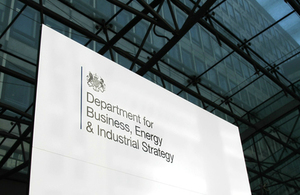Green industrial revolution in sight as government sets out plans for more clean energy
The fourth round of the Contracts for Difference (CfD) scheme, opening late 2021, will aim to double the capacity of renewable energy compared to the last round and expand the number of technologies supported.

- Government sets out next step towards green industrial revolution as plans for next round of renewables support scheme published
- aims to deliver up to double amount of renewable energy from previous round and lower costs for consumers alongside plans to support UK manufacturers
- follows Prime Minister’s Ten Point Plan to create 250,000 new green jobs, tackle climate change and build back greener from coronavirus
The government has set out its next steps towards a green industrial revolution with ambitious plans for the next round of its flagship renewables support scheme.
The fourth round of the Contracts for Difference (CfD) scheme – to open in late 2021 – will aim to double the capacity of renewable energy compared to the last round and expand the number of technologies supported, with offshore wind, onshore wind, solar, tidal and floating offshore wind projects all eligible to bid.
This will be coupled with a new consultation looking at the supply chain and ways to support more jobs and private investment by increasing the competitiveness of UK manufacturers. It will mean the country can reap the rewards of clean energy following the Prime Minister’s Ten Point Plan for a Green Industrial Revolution published last week.
Energy Minister Kwasi Kwarteng said:
The UK is a world leader in clean energy, with over a third of our electricity now coming from renewables. That huge achievement is thanks to the government’s Contracts for Difference scheme.
The new plans set out today build on the Prime Minister’s Ten Point Plan and put us firmly on the path towards building a new, green industrial revolution.
The CfD scheme is the government’s primary method of supporting low-carbon electricity. It encourages investment in renewable energy by providing projects with a stable income, while protecting consumers from paying increased costs when electricity prices are high.
The fourth round aims to increase the capacity of renewable energy from the 5.8GW achieved in the last round to up to 12GW, which could be enough to power 20 million electric cars on the UK’s roads in any year.
Government support to unleash the potential of offshore wind generation has seen the cost of it fall by two thirds in the last 5 years. Given its long-term potential to support the country’s 2050 net zero target, offshore wind projects will compete in their own ‘pot’ in the next auction process rather than against other technologies as they have previously.
Last year’s third round delivered record-low prices and secured enough clean energy to power over 7 million homes. Today’s plans set out changes to the structure of the scheme to build on that success.
Floating offshore wind projects will be able to bid for contracts for the first time, allowing wind farms to be built further away from the shoreline where it is windiest and increasing the UK’s renewable energy capacity even further.
And as announced in March, solar and onshore wind projects will be able to bid for the first time since 2015, coupled with a commitment to update guidance for new onshore wind schemes in England to fully reflect the impacts and benefits to local communities.
Following the first consultation on the fourth CfD round, the government has also announced today (24 November 2020) that a second consultation is being launched on new proposals for the Supply Chain Plan.
The proposals are designed to increase the clarity, ambition and measurability of commitments made by renewable project developers when they bid for contracts in the CfD scheme, and to introduce new measures if they subsequently fail to deliver on those commitments.
Today’s announcement follows last week’s unveiling of the Prime Minister’s Ten Point Plan, which outlines an ambitious vision of a low-carbon future for the UK, and will ensure that clean energy continues to play a key role in ending our contribution to climate change entirely by 2050.
Notes to editors
- read the consultation response
- the fourth round will see three ‘pots’ for renewables technologies:
- Pot 1: Established technologies – including onshore wind and solar PV
- Pot 2: Less-established technologies – including floating offshore wind, Advanced Conversion Technologies and tidal stream
- Pot 3: Offshore wind
- former coal-burning power stations that have been converted to biomass generation will be excluded from future CfD rounds
- Contracts for Difference are 15-year private law contracts between renewable electricity generators and the Low Carbon Contracts Company (LCCC), a government-owned company that manages CfDs at arm’s length from government
- contracts are awarded in a series of competitive auctions, known as allocation rounds, which have been run every 2 years. In the auction process, the lowest price bids are successful, which drives efficiency and cost reduction
- CfDs give greater certainty and stability of revenues to electricity generators by reducing their exposure to volatile wholesale prices, while protecting consumers from paying for higher costs when electricity prices are high
- the scheme has delivered substantial new investment and helped deliver significant reductions in the costs of capital for some renewable technologies
- the third round of the CfD renewable energy auction delivered record-low prices on enough clean energy to power over 7 million homes
- in the fourth allocation round of CfD, the government’s aim is to support up to double the capacity of renewable energy from levels achieved in the third round, rising from 5.8GW in AR3 to up to 12GW in AR4
- following the conclusion of the third CfD Allocation Round in September 2019, the scheme currently supports 49 renewable electricity projects (73 CfDs) across a range of technologies, totalling around 15.5 GW